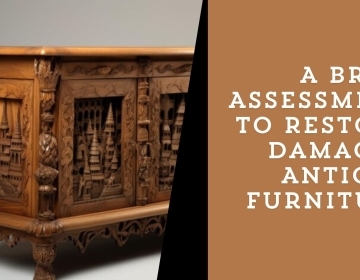What Are The Chief Ideas To Fullfill Upholstery Restoration?
A significant component of furniture repair services is upholstery restoration. It entails fixing or replacing the upholstery fabric on pieces of furniture like couches, armchairs, and ottomans. Upholstery restoration is a technique that may be completed in several ways and demands close attention to detail. Let's review the main ideas behind upholstery restoration guiding the professionals to continue with the trade at Hobart:
1. Fabric Choice
An effective upholstery restoration depends on careful fabric selection. It's important to select materials that complement the furniture in addition to being aesthetically pleasing. Professional upholstery restorers choose from a large assortment of colours and patterns that many upholsterers offer. They think of natural fabrics like cotton and linen as well as synthetic materials like mixes of acrylic, olefin, and nylon. Even they consider the room's design: is it elaborate or minimalistic? What are the aimed hues? Which kind of texture is particularly preferred? All these choices are carefully considered when choosing a new fabric for upholstery.
Some more factors are prioritized while selecting the fabric type which includes stain resistance, durability, sun fading, and cleaning techniques. Before installing the selected fabric, the upholstery restorers check it first to determine it is fit for daily usage. Likewise, they can better decide if the fabric is sure to survive. In terms of stain resistance and longevity, synthetic fibres win in performance over natural fibre. Nevertheless, when knowledgeable upholstery professionals handle the upholstery restoration, the natural fibres attain a more vibrant appearance compared to the synthetics. They ensure the purchased cloth suffices both the performance and appearance, before deciding to buy another.
2. Re-Padding and Re-Stitching
When the worn-out padding, fabric, or stitching on furniture is replaced, then it is known as furniture and upholstery re-stitching and re-paddig. This critical furniture restoration procedure is beneficial in maintaining both the structural integrity and aesthetic appeal of the upholstered furniture. As a mark of guarantee that the furniture has enough cushion material to hold on to the shape and is comfortable as ever to sit on, the professionals apply re-padding. Now when they are providing the re-padding services, then the upholstery professionals utilize the foam, down feathers, cotton, batting and other materials.
In re-stitching services, the extremely loose, cracked and damaged upholstery fabric seams are fixed or replaced. Typically using Gimp, Dacron and Threads, the upholsterers can piece together fresh fabrics to retain a consistent finish mimicking the refinished antique furniture's texture or the prevailing fabric pieces. To maintain the existing material's durability over time, Reinforcement stitches are of frequent necessity. To conceal tears or holes in the fabric designs, pertinent patches may also need to be sewn onto specific areas. This is particularly useful for fixing antique furniture that needs specific attention to be restored to like-new condition.
3. Re-Covering
One of the most often used upholstery restoration techniques is recovery. This includes removing the old fabric, washing the frame, and putting on fresh fabric. Selecting the appropriate fabric is crucial since it determines how long the item will remain in good condition before being used again. Recovering furniture with intricately shaped details should match the furniture well in terms of size and cut.
However, with more contemporary materials like plywood, particle board, or MDF, there may be a limit to how much work can be done before you need to completely replace it. Solid wood frames can typically tolerate significant restoration treatments. For this reason, the professionals might want to think about re-upholstering any upholstered furniture that they have made of these materials, which entails changing all of the components—including any padding and stuffing—instead of keeping them.
Furniture that has been damaged over time may require disassembly and reassembly to restore it to its original state or, if it is to be reupholstered, slight changes for enhanced comfort and better visual detailing. When done correctly, it's a tedious process that should only be attempted by a furniture restoration expert and may entirely convert an old piece into something new and fascinating once more.
In conclusion, for anyone wishing to update their living area without going over budget, furniture upholstery restoration is an affordable, useful solution. Upholstery restoration has several benefits, from cost-effectiveness and style personalization to sustainability and sentimental significance. So, give upholstery restoration a try and see the difference it may make to your home before thinking about getting rid of your cherished furniture.








Post a Comment